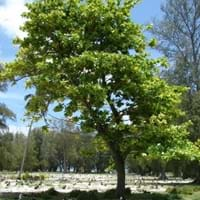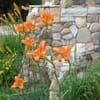Life Span
Perennial
Perennial
Type
Bulb or Corm or Tuber
Fruit, Perennial, Tree
Origin
Southern Africa, South Africa
Africa, Asia, Australia
Types
Cusick's camas, large camas
Not Available
Number of Varieties
Not Available
Habitat
meadows, moist forests, Open Plains
Subtropical climates, Tropical areas
USDA Hardiness Zone
8-10
Not Available
AHS Heat Zone
Not Available
Not Available
Sunset Zone
21,22
Not Available
Habit
Rosette/Stemless
Spreading
Flower Color
White, Yellow, Red, Blue, Purple, Pink, Lavender, Violet
Non Flowering Plant
Flower Color Modifier
Bicolor
Not Available
Fruit Color
Not Available
Dark Brown, Green
Leaf Color in Spring
Green
Dark Green
Leaf Color in Summer
Light Green
Green
Leaf Color in Fall
Several shades of Green
Red
Leaf Color in Winter
Light Green
Red
Leaf Shape
Long slender
Broadly Ovate
Plant Season
Spring, Winter
Summer
Sunlight
Full Sun, Partial Sun
Full Sun, Partial Sun
The pH of Soil
Acidic, Neutral
Acidic, Neutral
Soil Drainage
Well drained
Well drained
Bloom Time
Early Spring, Spring, Late Winter, Indeterminate
Summer
Tolerances
Black Walnut Toxicity, Rabbit, Shade areas
Dry soil
Where to Plant?
Container, Ground, Pot
Container, Ground
How to Plant?
chipping, Offsets, scooping, Twin scaling, Vegetative
Seedlings, Stem Planting
Plant Maintenance
Low
Low
Watering Requirements
Medium
Needs less watering
In Summer
Lots of watering
Ample Water
In Spring
Moderate
Moderate
In Winter
Average Water
Average Water
Soil pH
Acidic, Neutral
Acidic, Neutral
Soil Drainage Capacity
Well drained
Well drained
Sun Exposure
Full Sun, Partial Sun
Full Sun, Partial Sun
Pruning
Remove damaged leaves, Remove dead branches, Remove dead leaves
Remove dead branches, Remove dead leaves
Fertilizers
All-Purpose Liquid Fertilizer, General garden fertilizer, Time release fertilizer
All-Purpose Liquid Fertilizer
Pests and Diseases
Pests and diseases free
Not Available
Plant Tolerance
Black Walnut Toxicity, Rabbit, Shade areas
Dry soil
Flower Petal Number
Single, Double, Semi-Double
Not Available
Foliage Texture
Medium
Fine
Foliage Sheen
Glossy
Glossy
Aesthetic Uses
Bouquets, Cottage Garden
Showy Purposes
Beauty Benefits
For treating wrinkles, Remove blemishes, Skin Problems
Making cosmetics
Edible Uses
Sometimes
Yes
Environmental Uses
Air purification, Forms dense stands, Very little waste
Air purification, Food for birds
Medicinal Uses
Leucoderma, Urinary problems
Energy, Minerals, ß-carotene, Vitamin A, Vitamin C, Vitamin E
Part of Plant Used
Bulbs, Root
Fruits
Other Uses
Animal Feed, Decoration Purposes, Showy Purposes
Grown for shade, Used As Food
Used As Indoor Plant
Yes
No
Used As Outdoor Plant
Yes
Yes
Garden Design
Bedding Plant, Container, Cutflower, Mixed Border, Rock Garden / Wall
Edible, Fruit Tree
Botanical Name
Hyacinthus orientalis
Terminalia catappa
Common Name
Hyacinth, common hyacinth, garden hyacinth, dutch hyacinth
Bengal almond, country almond, false kamani, Indian almond, Malabar almond, sea almond, tropical almond
In Hindi
ह्यचीन्थ
जंगली बादाम
In German
Hyazinthe
Katappenbaum, Seemandelbaum, Indische Mandel
In French
jacinthe
Badamier
In Spanish
jacinto
almendro malabar, almendro de los trópicos, almendrón, falso kamani, Egombegombe
In Greek
υάκινθος
Ινδικό αμύγδαλο
In Portuguese
jacinto
amêndoa, amendoeira, castanheira, anoz, árvore-de-anoz, castanholeira, coração-de-nego, castanhola, sete-copas, chapéu-de-sol, guarda-sol, terminália, figueira-da-índia
In Polish
hiacynt
Migdałecznik właściwy
In Latin
et hyacinthinas,
inti almont
Phylum
Magnoliophyta
Magnoliophyta
Class
Liliopsida
Magnoliopsida
Family
Liliaceae
Combretaceae
Genus
Hyacinthus
Terminilia
Clade
Angiosperms, Monocots
Angiosperms, Eudicots, Rosids
Tribe
Not Available
Not Available
Subfamily
Scilloideae
Not Available
Season and Care of Wild Hyacinth and Indian Almond
Season and care of Wild Hyacinth and Indian Almond is important to know. While considering everything about Wild Hyacinth and Indian Almond Care, growing season is an essential factor. Wild Hyacinth season is Spring and Winter and Indian Almond season is Spring and Winter. The type of soil for Wild Hyacinth is Loam and for Indian Almond is Loam while the PH of soil for Wild Hyacinth is Acidic, Neutral and for Indian Almond is Acidic, Neutral.
Wild Hyacinth and Indian Almond Physical Information
Wild Hyacinth and Indian Almond physical information is very important for comparison. Wild Hyacinth height is 10.20 cm and width 5.10 cm whereas Indian Almond height is 500.00 cm and width 600.00 cm. The color specification of Wild Hyacinth and Indian Almond are as follows:
Wild Hyacinth flower color: White, Yellow, Red, Blue, Purple, Pink, Lavender and Violet
Wild Hyacinth leaf color: Green
Indian Almond flower color: Non Flowering Plant
- Indian Almond leaf color: Dark Green
Care of Wild Hyacinth and Indian Almond
Care of Wild Hyacinth and Indian Almond include pruning, fertilizers, watering etc. Wild Hyacinth pruning is done Remove damaged leaves, Remove dead branches and Remove dead leaves and Indian Almond pruning is done Remove dead branches and Remove dead leaves. In summer Wild Hyacinth needs Lots of watering and in winter, it needs Average Water. Whereas, in summer Indian Almond needs Ample Water and in winter, it needs Average Water.





